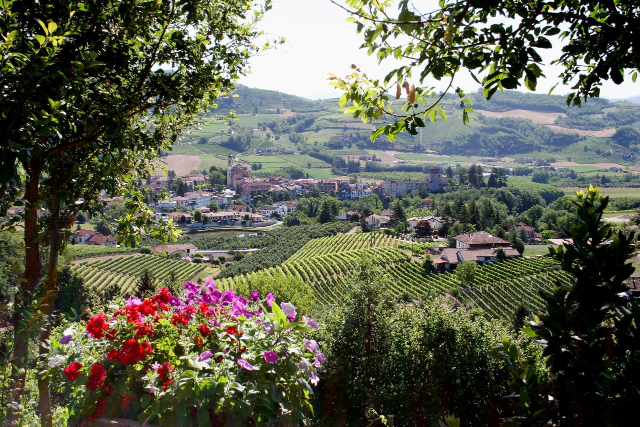Bubbio
Last update 30 January 2024
Bubbio: the crossroads between the Bormida Valley and Astigiano where the land smells of Muscat, hazelnuts and Robiola di Roccaverano
Landscape
Bubbio lies in the Bormida Valley, in the southern Astigiano region.
It is about 40 km from Asti, the provincial capital.
Insights
“Il Paese”. Comune di Bubbio, Apr. 20, 2018, www.comune.bubbio.at.it/it/page/il-paese-87dc84d8-6493-4570-b3c7-dbac8cd19b98. Last accessed Jan. 6, 2024.
History
Roman era
Historians believe that Bubbio was already inhabited in Roman times.
1142
There is the first written mention referring to Bubbio.
1205
Bubbio comes under the rule of Manfredo II of Saluzzo for the derisory sum of 200 lire.
1300
The territory is first governed by the Marquis of Saluzzo and later passes to the Marquis of Monferrato.
1464
Bubbio is granted municipal statutes.
The rule of the House of Savoy
Bubbio passes, in the 18th century, under the rule of the Savoys.
Insights
“La storia”. Comune di Bubbio, Apr. 20, 2018, www.comune.bubbio.at.it/it/page/la-storia-e3522d25-0a9f-40a7-bb75-b34050dc9d5d. Last accessed Jan. 6, 2024.
Administration
Food and wine and typical products
Bubbio is one of the municipalities belonging to the Langa Astigiana, home of the famous Robiola di Roccaverano.
The most refined palates will also appreciate the local confectionery specialties, and wine production is flourishing.
Among the wines of the territory, we highlight Muscat, Brachetto, Barbera, Dolcetto, Freisa, Chardonnay, and Cortese.
The main event of the town is certainly the Polenta Festival (Sagra del Polentone), the first Sunday after Easter; polenta is prepared by the expert hands of the local Pro Loco volunteers with the very fine variety of eight-row corn.
To be seen
The current late 18th-century structure of the castle stands where a manor of medieval origin once stood.
Moreover, worth seeing is the Church of Our Lady of the Assumption (Chiesa di Nostra Signora Assunta), the Church of the Confraternity of the Annunciation (Oratory of the Disciplinati or Confraternity of the Battuti) — Chiesa della Confraternita dell'Annunziata (Oratorio dei Disciplinati o Confraternita dei Battuti), Casa Sizia, and the Chapel of Our Lady of Grace (Cappella di Nostra Signora delle Grazie).
Note that vases, amphorae, and furnishings of Roman origin have been found at the Church of St. Louis and the Holy Family (Chiesa di San Luigi e della Sacra Famiglia).
The Town Hall stands in the main square of the town.
There are several rural churches: the one of St. Grato is worth visiting.
Absolutely not to be missed, in the regione Sant’Ippolito, is also the Quirin Mayer Sculpture Park, an en plein air art space.
Finally, the Schaulager Q. & R. Mayer Art Gallery and the giant pencils – with a panoramic frame – in the regione Sant’Ippolito are worthy of note.
Insights
“Cosa visitare”. Comune di Bubbio, Jun. 19, 2019, www.comune.bubbio.at.it/it/page/cosa-visitare-7533f619-6efa-4178-8a56-b51ed3f8ec61. Last accessed Jan. 6, 2024.
“Punti di Interesse”. Comune di Bubbio, www.comune.bubbio.at.it/it/point-of-interests. Last accessed Jan. 6, 2024.
Curiosity
The origins of the famous Polentone of Bubbio are mixed between history and legend.
It is said, in fact, that a group of coppersmiths, having reached the end of their strength in Bubbio, received cornmeal from the local lord.
The latter decided to use the gift to cook a giant polenta, in the square, to feed the entire population.
The noble gesture is still recalled today, and the event attracts hundreds of tourists from all over Italy every year.
Data source
- Synthesis / reprocessing information taken from the institutional website (current and previous versions) of the Municipality of Bubbio — https://www.comune.bubbio.at.it
- Cover image source: Municipality of Bubbio — https://www.comune.bubbio.at.it
Insights
BeWeb - Beni Ecclesiastici in WEB
https://beweb.chiesacattolica.it/
Catalogo Generale dei Beni Culturali
https://catalogo.beniculturali.it/
Centro Interuniversitario di Storia Territoriale "Goffredo Casalis"
https://www.archiviocasalis.it/
Ente Turismo Langhe Monferrato Roero
https://www.visitlmr.it
Wikipedia, l'enciclopedia libera.
https://it.wikipedia.org
See also
News from Bubbio
- Discover the latest news posted on the website of the Municipality of Bubbio
https://www.comune.bubbio.at.it/it/news
Events in Bubbio
- Discover the events posted on the website of the Municipality of Bubbio
https://www.comune.bubbio.at.it/it/events

